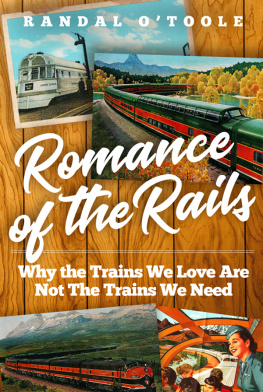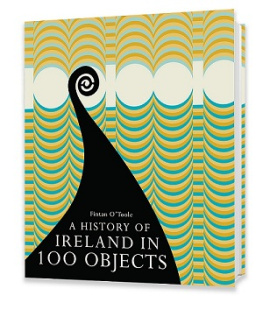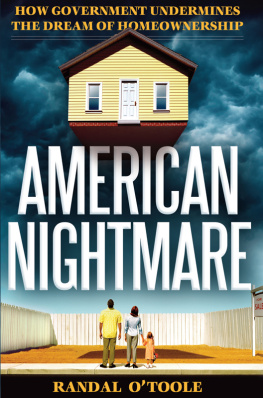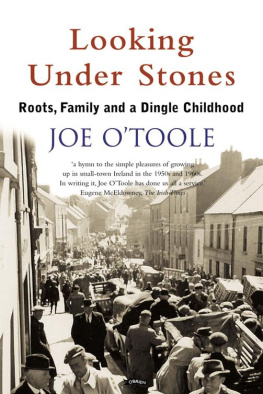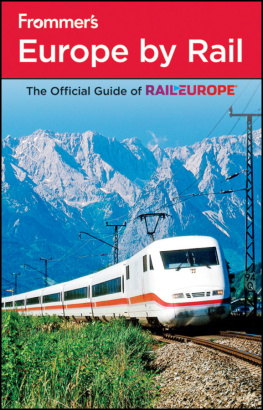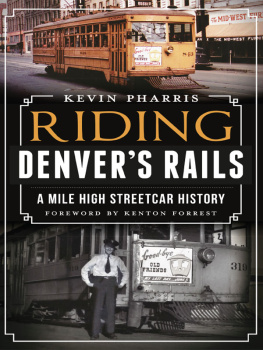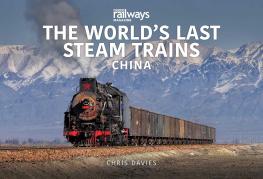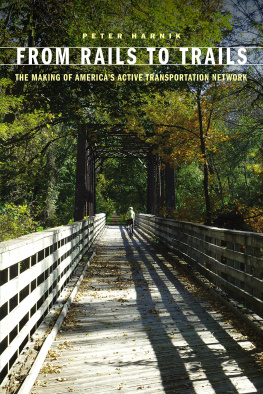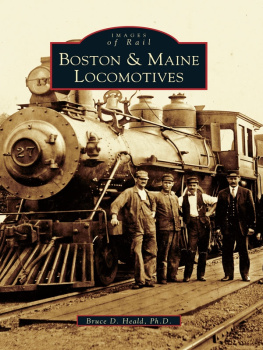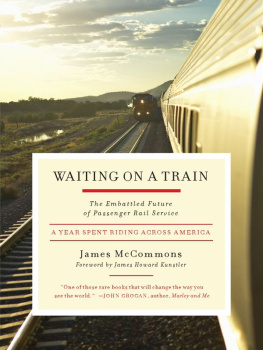In June 1938, Baldwin Locomotive Works of Eddystone, Pennsylvania, delivered threesteam locomotives, , 701, and 702, to the Spokane, Portland & Seattle(SP&S) Railway. Built to pull passenger trains between Portland and Spokane,these grand machines were the culmination of more than a century of improvementsto steam technology, as Baldwin had constructed more than 62,000 locomotives sincefounder Matthias Baldwin built his first in 1831.
The 68-foot-long boilers of the 700-class series rested on one-piece, cast-steelframes that ingeniously included hollow spaces to hold compressed air for a trainsair brakes. Fitted with roller bearings on every wheel to minimize resistance, superheatersin the boiler so that every drop of water was converted to steam before enteringthe cylinders, and some of the largest fireboxes ever used for oil-burning locomotives,the 700-class engines were considered exceptional by rail historian Robert Le Massena.
I was fortunate enough to help restore the SP&S 700 to fully operational statusin 1989 and 1990. The railroad had donated the locomotive to the city of Portlandin 1958, and it sat in a city park for more than two decades before it was removedfor restoration in the early 1980s. The all-volunteer crew doing the work includedwelders, boiler makers, machinists, woodworkers, and other skilled craftsmen. I possessednone of those skills, so I did grunt work and wrote and edited the groups newsletter.
More than 110 feet long including the tender, standing 17 feet tall, and weighing440 tons when loaded with fuel and water, the locomotive was an awesome sight atany time, but especially when steamed up and in motion. Even standing still, thebreathing of the air compressors, the whir of the steam turbine powering the locomotivelights, and various other sounds made it seem alive. At mainline speeds, the chuffof the cylinders combined with the intermittent, multitoned whistle made it abundantlyclear this was no Disneyland toy. As of this writing, it is the third-most-powerfuloperating steam locomotive in the world.
With four pilot wheels to help the locomotive navigate curves at high speeds, eight77-inch-tall driving wheels, and four trailing wheels to hold the weight of a fireboxas big as a moderate-sized bedroom, the locomotive was known as a 4-8-4. This madeit a Northern, named after one of the SP&Ss parent railways, the Northern Pacific,the first railroad to order a locomotive with this wheel arrangement in 1926. Locomotiverefinements between 1926 and 1938 included roller bearings, higher-pressure boilers,and more efficient methods of injecting water into the boiler.
The year 1937 represents the high-water mark of steam locomotive development andconstruction, wrote Le Masenna three decades later. Locomotives were not only bigger,they were twice as powerful per ton as locomotives from just two decades earlier. Advancessuch as roller bearings and large fireboxes increased locomotive efficiencies inways not revealed by ordinary measurements of power. The 700-class fireboxes, forexample, were large because the locomotives were based on a Northern Pacific designthat burned low-grade coal. The SP&S modified them to burn oil, which was farmore efficient. Thanks to its huge firebox, the 700 could pull a 12-car train at100 miles per hour, turning the wheels just 440 revolutions per minute, and thelocomotive crew didnt have to worry about running out of steam as long as therewas water in the tank because the boiler could turn five gallons of water into steamevery second.
The first diesel locomotivesthen called oil electrics to avoid the stigma of aGerman name so soon after World War Iwent into use in 1924, but Baldwin was convincedsteam would remain preeminent for decades. In 1930, Samuel Vauclain, the companyschairman and a notable locomotive designer in his own right, predicted steam wouldremain the dominant form of railroad power for at least another 50 years. Despitethe appearance of lightweight diesel-powered passenger trains in 1934, another Baldwinexecutive argued in 1937 that diesel locomotives could never handle the job of pullingheavy freight, and sometime in the future, when all this is reviewed, it will befound that our railroads are no more dieselized than they are electrified.
In March 1939, however, just nine months after Baldwin delivered the 700s, GeneralMotors (GM) produced the first-class FT diesel locomotive and sent it on an 83,764-miletour of 20 major railroads, pulling trains in 35 states. The FTwhich stood for 1,400horsepower (even though it was really just 1,350) but was also an abbreviation forfreightwas actually four different units, each powered by a 16-cylinder engine,which powered electric motors for each wheel. Skeptical railroaders knew steam locomotiveswith two to four cylinders were complicated enough to maintain, and they shudderedat the thought of maintaining a locomotive with 64 cylinders.
Yet on the tour, the
As a result of this demonstration tour, that first FT became known as the dieselthat did it because it persuaded most in the railroad industry that diesel-electriclocomotives were superior to steam. It must be ranked as perhaps the most influentialpiece of motive power since Stephensons Rocket, said Trains magazine editor DavidP. Morgan, for in one stroke it broke steams historic monopoly of freight trafficand thereby forecast total dieselization, here and abroad.
Diesels didnt have to stop for water every hundred miles or so, and they could bein service 98 percent of the time, while steam locomotives were down for maintenanceas much as half the time. A diesel locomotive cost more than a similarly poweredsteam locomotive, but because of their service records, two diesels could work asmany hours per week as three or four steamers, and with lower fuel and maintenancecosts. Running two or more steam locomotives on a single train required separatecrews for each locomotive, while a half dozen or more diesels could be operated togetherby a single crew. Any one of these advantages made diesels a threat to steam; allof them together were fatal to the future of steam locomotion.
General Motors ended up selling more than 7,600 FTs and successor F-unit locomotivesto the railroads, as well as thousands of other engine styles. By the end of 1956,most major American railroads had completely converted their steam-powered locomotivesto diesels, and they would have done so several years earlier had not World War IIintervened. Baldwin attempted to convert to diesel production, but it eventuallywent out of business after making its last locomotive, a diesel switch engine, in1956. Its failure to fully adapt to the needs of the new diesel technology was onereason why it went out of business. Single-piece, cast-steel frames worked for steam,for example, but they tended to crack due to the vibrations of diesels with theirhigh number of revolutions per minute.
TECHNOLOGY REPLACEMENT
Historians consider the rapid conversion of steam to diesel to be a classic exampleof technology replacement. Transportation history is full of such replacements, fromsailing ships to steamships, canals to railroads, and horsecars to electric streetcars.This book is about the replacement of urban railcars and intercity passenger trainswith other forms of transportation and the curious efforts by American governmentsto prevent or reverse that replacement. Since 1970, federal, state, and local governmentshave spent hundreds of billions of dollars building new passenger rail lines andrestoring old ones despite knowing not a single penny of that cost would ever berecovered out of passenger fares.
I write this book as a love letter to a dying friend, as Ive been thrilled by passengertrains since I was five years old. I rode my first train from Grand Forks, NorthDakota, to Portland, Oregon, in 1958. That summer, we drove in my parents first newcar from Oregon to Ohio, where my fathers family lived, and then to North Dakota,where my mothers family lived. With no vacation time left, my father drove home alone,leaving my mother and me to enjoy a few weeks in Grand Forks before taking the trainback to Oregon.

